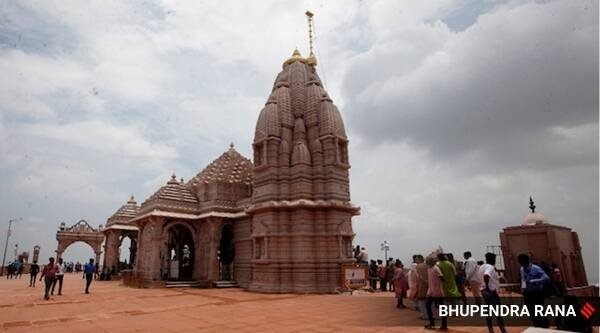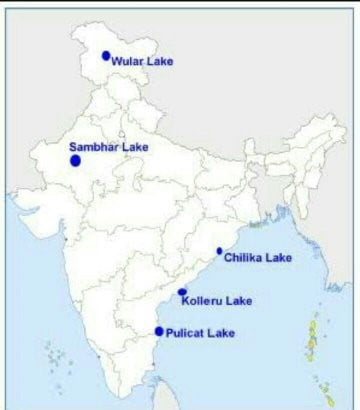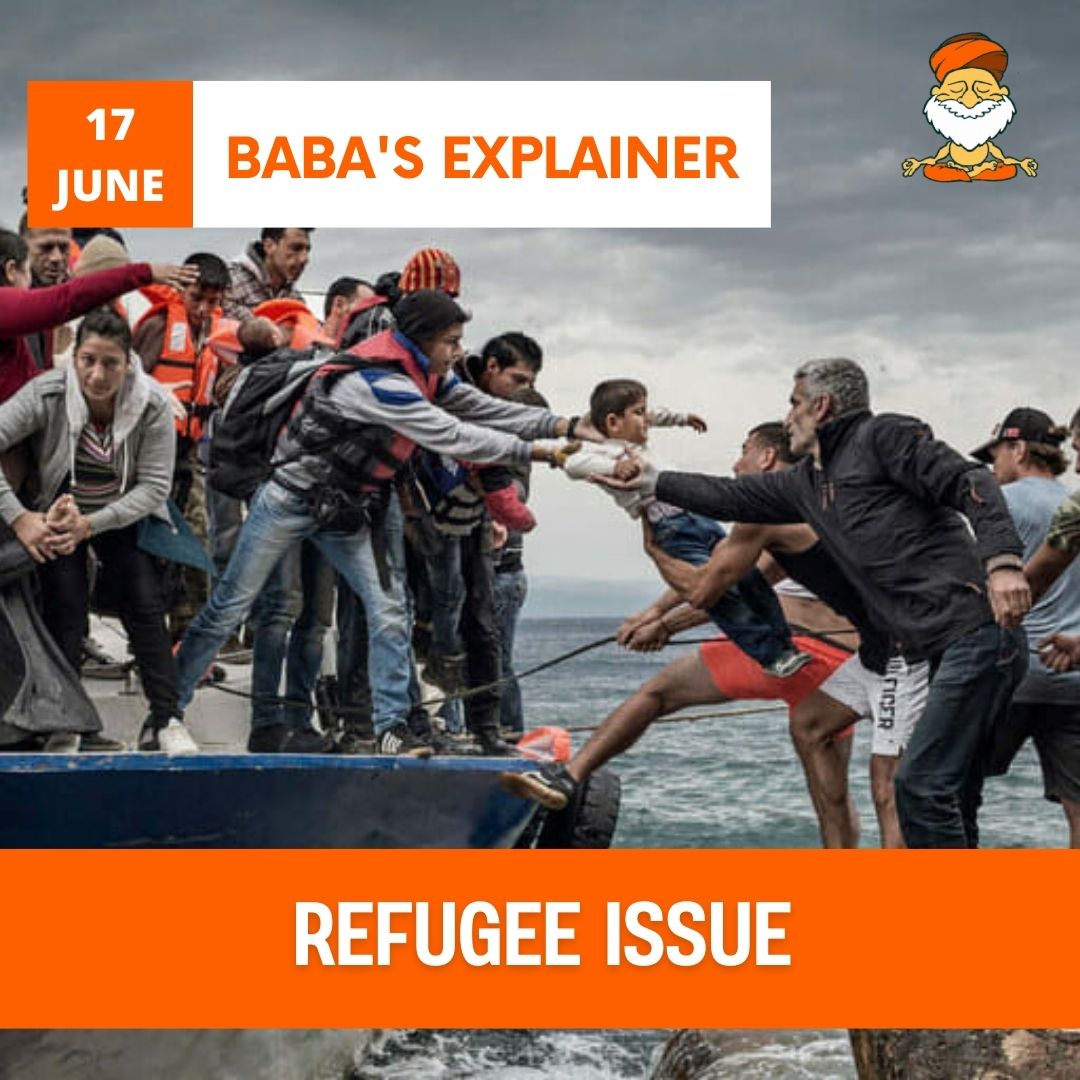IASbaba's Daily Current Affairs Analysis
Archives
(PRELIMS & MAINS Focus)
Syllabus
- Prelims – International Relations
- Mains – GS 2 (International Relations)
In News: India is hosting the two-day conclave to mark the 30th anniversary of its relations with the 10-nation Association of Southeast Asian Nations (ASEAN).
- The foreign ministers of India and ASEAN countries to uphold multilateralism in jointly responding to the regional and global challenges
- They reaffirmed the commitment to multilateralism founded on the principles of the international law, including the Charter of the United Nations, the 1982 United Nations Convention on the Law of the Sea (UNCLOS) and other relevant UN treaties and conventions, maintain an open and inclusive regional cooperation framework, support ASEAN Centrality in the evolving rules-based regional architecture, uphold multilateralism in jointly responding to regional and global challenges
- Myanmar did not participate in the India-ASEAN foreign ministers’ meeting
ASEAN
- The Association of Southeast Asian Nations was established on 8 August 1967 in Bangkok, Thailand, with the signing of the ASEAN Declaration (Bangkok Declaration)
- The motto of ASEAN is “One Vision, One Identity, One Community”.
- Founding Members Indonesia, Malaysia, Philippines, Singapore and Thailand.
- Brunei Darussalam (1984), Vietnam (1995), Lao PDR and Myanmar (1997), and Cambodia (1999), joined the ASEAN later.
- ASEAN Secretariat – Indonesia, Jakarta.
Significance
- It is the 3rd largest market in the world
- It is the 6th largest economy in the world, 3rd in Asia.
- The Free-trade agreements (FTAs) with China, Japan, South Korea, India, Australia and New Zealand.
ASEAN-led Forums
- ASEAN Regional Forum (ARF): Launched in 1993, the twenty-seven-member multilateral grouping was developed to facilitate cooperation on political and security issues to contribute to regional confidence-building and preventive diplomacy.
- ASEAN Plus Three: The consultative group initiated in 1997 brings together ASEAN’s ten members, China, Japan, and South Korea.
- East Asia Summit (EAS): The summit seeks to promote security and prosperity in the region and is usually attended by the heads of state from ASEAN, Australia, China, India, Japan, New Zealand, Russia, South Korea, and the United States.
India and ASEAN
- India’s relationship with ASEAN has emerged as a key cornerstone of our foreign policy.
- The relationship has evolved from the ‘Look East Policy’ enunciated in early 1990s which led India to become a Sectoral Partner of ASEAN in 1992, a Dialogue Partner in 1996 and a Summit-level Partner in 2002.
- The India-ASEAN Strategic Partnership acquired a new momentum with the announcement of “Act-East Policy” in the 12th Summit in 2014.
- India and ASEAN already has 25 years of Dialogue Partnership, 15 years of Summit Level interaction and 5 years of Strategic Partnership with ASEAN.
Economic Cooperation:
- ASEAN is India’s fourth largest trading partner.
- India’s trade with ASEAN stands at approx. 10.6% of India’s overall trade.
- India’s export to ASEAN stands at 11.28% of our total exports. The ASEAN-India Free Trade Area has been completed.
Socio-Cultural Cooperation:
- Programmes to boost People-to-People Interaction with ASEAN, such as inviting ASEAN students to India, Special Training Course etc
Delhi Declaration:
- To identify Cooperation in the Maritime Domain as the key area of cooperation under the ASEAN-India strategic partnership.
Delhi Dialogue:
- Annual Track 1.5 event for discussing politico-security and economic issues between ASEAN and India.
ASEAN-India Centre (AIC):
- To undertake policy research, advocacy and networking activities with organizations and think-tanks in India and ASEAN.
Political Security Cooperation:
- India places ASEAN at the centre of its Indo-Pacific vision of Security and Growth for All in the Region.
Financial Assistance
Financial assistance has been provided to ASEAN countries from the following Funds:
- ASEAN-India Cooperation Fund
- ASEAN-India S&T Development Fund
- ASEAN-India Green Fund

Source: Indian Express
Previous Year Questions
Q.1) Consider the following countries: (2018)
- Australia
- Canada
- China
- India
- Japan
- USA
Which of the above are among the ‘free-trade partners’ of ASEAN?
- 1, 2, 4 and 5
- 3, 4, 5 and 6
- 1, 3, 4 and 5
- 2, 3, 4 and 6
Syllabus
- Prelims – Current Affairs
In News: Prime Minister of India will inaugurate the redeveloped Kalika Mata temple atop the Pavagadh hill in Panchmahal district, Gujarat
- The 11th-century temple complex, housing a dargah, is an example of harmony of faiths
- For the first time, the temple will have a shikhara (superstructure and spire) where earlier stood the Hazrat Sadanshah Wali Peer dargah that was relocated to a space next to it in an amicable settlement during redevelopment.
Kalika Mata Temple
- Kalika Mata Temple is a Hindu goddess temple complex and pilgrim centre at the summit of Pavagadh Hill in Panchmahal District, India, with in the Champaner-Pavagadh Archaeological Park.
- It dates from the 10th or 11th centuries.
- The temple is the site of one of the Great holy Shakti Peethas.
- The temple complex is part of the Champaner-Pavagadh Archaeological Park, a UNESCO World Heritage Site.
- It is believed that in the 15th century, Sultan Mahmud Begda conquered Champaner where he set up his capital and destroyed the shikhara of the temple
- Lore goes that Sadanshah Peer, originally a Hindu Fakir, who embraced Islam to be part of Mahmud Begda’s court played a key role in saving the temple from being destroyed.
- The Sadanshah Peer dargah is believed to have been built around that time.

Source: Indian Express
Previous year Questions
Q.1) With reference to Chausath Yogini Temple situated near Morena, consider the following statements: (2021)
- It is a circular temple built during the reign of Kachchhapaghata Dynasty.
- It is the only circular temple built in India.
- It was meant to promote the Vaishnava cult in the region.
- Its design has given rise to a popular belief that it was the inspiration behind the Indian Parliament building.
Which of the statements given above are correct?
- 1 and 2
- 2 and 3 Only
- 1 and 4
- 2, 3 and 4
Syllabus
- Prelims – Environment
In News: Thousands of migratory birds reach the sanctuary every year for nesting.
- The Atapaka Bird Sanctuary at Kolleru Lake has become a safe breeding ground for many migratory species namely Grey Pelicans and Painted Storks
- Grey Pelican and Painted Stork both are near threatened species under IUCN Red List of Threatened Species.

Kolleru Lake
- Kolleru Lake is located between the deltas of the Krishna and Godavari rivers in Andhra Pradesh.
- It is an important habitat for an estimated 20 million residents and migratory birds like Grey or Spot-billed pelicans.
- It was notified as a Wildlife Sanctuary in 1999 under India’s Wild Life Protection Act, 1972.
- It was declared a wetland of international importance in 2002 under Ramsar convention.
Previous Year Questions
Q.1) In which one of the following states is Pakhui Wildlife Sanctuary located? (2018)
- Arunachal Pradesh
- Manipur
- Meghalaya
- Nagaland
Syllabus
- Mains – GS 2 (International Relations)
Context: Recent Iranian Foreign Minister’s first visit to India has many implications for bilateral relations.
India-Iran relation
Political relation
- India and Iran shared a border till 1947 and share several common features in their language, culture and traditions.
- Independent India and Iran established diplomatic links on 15 March 1950
Economic relation
Energy
- India-Iran commercial ties have traditionally been dominated by Indian import of Iranian crude oil.
- Iran has been one of the top sources of crude oil for India.
- The proposed Iran-Oman-India undersea gas pipeline can help India move towards clean energy
Geo-Strategic/connectivity
- Infrastructure projects like Chahbahar Port, International North South Transport Corridor will help India to bypass the overland route through Pakistan and help in better trade relations with West and Central Asia.
Geopolitical
- Iran would act as a gateway to Central Asia and Afghanistan
- India and Iran can engage each other to strengthen the demand for rule based order in Afghaistan
Cultural relation
- A MoU was signed in 2008 on holding of “Days of Culture” in two countries.
- India over the years has emerged as one of the favourite tourist destinations for Iranian tourists and every year around 40,000 Iranians visit India for various purposes.
Terrorism
- India and Iran both face the threat of terrorism by outfits like Al-Qaeda amd Islamic State. Hence both the countries can merge their interest to counter terrorism
Challenges
Intolerance
- The comments made in India on the Prophet was criticised by the 57-member Organisation for Islamic Cooperation (OIC).
- The controversy has overshadowed India’s other diplomatic engagements.
China factor
- Iran is a part of China’s ambitious Belt And Road initiative. This might come in conflict with India’s interests in Iran
USA Sanctions on Iran
- India has drastically cut its Iranian engagement due to sanctions (oil import), while Iran has looked to China for more infrastructure investment
- Bilateral trade dropped to just over $2 billion (2020-21) from $17 billion (2017-18).
India-Israel ties
- Ties appeared to have been hit by New Delhi’s decision to join the Israel-India-UAE-U.S. group, portrayed as an “anti-Iran” coalition.
Way forward
India needs to play a balancing act between the Middle East and the west. India needs to closely watch the space created by its exit, given India’s loss is an opportunity for other countries, especially China.
Source: Indian Express
Syllabus
- Prelims – Economy – Banking
In News: The US Federal Reserve hiked interest rates by three quarters of a percentage point, its most aggressive move since 1994, in a bid to tame runaway inflation.
What will be the impact on other markets, including India?
A hike in rates in the US could have a three-pronged impact.
- When the Fed raises its policy rates, the difference between the interest rates of the two countries narrows, thus making countries such as India less attractive for the currency carry trade.
- A high rate signal by the Fed would also mean a lower impetus to growth in the US, which could be yet negative news for global growth
- Higher returns in the US debt markets could also trigger a churn in emerging market equities, tempering foreign investor enthusiasm
- There will be potential impact on currency markets, stemming from outflows of funds.
Source: Indian Express
Syllabus
- Mains – GS 2 (Judiciary)
Context: Recently, the Supreme Court, in Manoj & others v. State of MP, embarked on a significant attempt to reform the administration of the death penalty.
Background
- There has long been a judicial crisis in death penalty sentencing on account of unprincipled sentencing, arbitrariness and worrying levels of subjectivity.
- The crisis has been acknowledged by the Supreme Court, the Law Commission of India, research scholars and civil society groups.
- At the heart of this concern is the fact that death penalty sentencing has been, by and large, crime-centric.
Bachan Singh (1980)
- The ruling of the five-judge bench in this case laid down a framework to be followed by judges who have to choose between life imprisonment and death sentence.
- This framework made it binding for the sentencing judges to take into account factors relating to both the crime and accused and assign them appropriate weight.
- Judges couldn’t decide to impose the death penalty only on the basis of the crime.
- The background of the accused, the personal circumstances, mental health and age were considerations a sentencing judge had to account for.
- Judges were required to weigh mitigating and aggravating factors to ascertain if a case was fit for the death sentence and also determine if the option of life imprisonment was unquestionably foreclosed.
- There is confusion across all levels of the judiciary on the requirements of this framework and its implementation.
- An important reason for the breakdown is that factors relating to the crime — the nature of the crime and its brutality — are often dominant considerations, and there is barely any consideration of mitigating factors
- A vast majority of India’s death row prisoners are extremely poor and often do not receive competent legal representation.
- Thus in the last four decades Bachan Singh framework has not been implemented in letter and spirit
The significance Manoj & others v. State of MP
- It takes the lax implemetation of Bachan Singh judgment problem head-on.
- The judgment is clear that certain procedural thresholds must be met for sentencing to be fair and explicitly rejects the idea that death sentences can be determined solely on crime-based considerations
Key points
- Commitment to recognising reformation as integral to the Indian criminal justice system, especially death penalty sentencing
- It asks the state and sentencing judges to establish that there is no probability of reformation of the accused.
- It recognises that aspects of the accused’s life, both pre-offence and post-offence in prison, are relevant.
- As practical steps in this process, the judgment asks courts to call for reports from the probation officer as well as prison and independent mental health experts.
- The state too must present material that speaks to a wide range of factors. The right of the accused to present mitigating factors and rebut the state, if necessary, is also recognised.
Challenges
- The attempts to bring about procedural coherence and integrity will face significant challenges in the trial courts and the high courts it is far from certain that these reforms will be meaningfully implemented in those forums.
- The Supreme Court will have to provide basis for consideration of the above mentioned factors, in the absence of such foundations, death penalty sentencing will continue to be unprincipled and sentencing judges are not going to understand the need for this wide range of sentencing information.
All our actions are a result of a complex web of biological, psychological, and social factors and that understanding has a very significant bearing on discussions on criminality and punishment including death penalty.
Source: Indian Express
Baba’s Explainer – UK-Rwanda plan for Asylum seekers & India’s Refugee Issue

Syllabus
- GS-2: Human Rights
- GS-2: Effect of policies and politics of developed and developing countries
Context: The first flight scheduled to deport asylum seekers from the United Kingdom to Rwanda as part of the UK-Rwanda plan was canceled on 14 June.
Read Complete Details on UK-Rwanda plan for Asylum seekers & India’s Refugee Issue
Daily Practice MCQs
Q.1) Consider the following statements
- ASEAN Plus Three – the consultative group includes India
- India has signed Free Trade Agreement with ASEAN
- Delhi Declaration is a key area of cooperation in the Maritime Domain under the ASEAN-India strategic partnership
Choose the correct statements:
- 1 only
- 2 only
- 2 and 3
- 1, 2 and 3
Q.2) Atapaka Bird Sanctuary recently in news is located in?
- Odisha
- Gujarat
- Andhra Pradesh
- Maharashtra
Q.3) Consider the following statements about Kalika Mata temple atop the Pavagadh hill, Gujarat
- It is a 7th-century temple built during the reign of Harshvardhana
- The temple complex is part of the Champaner-Pavagadh Archaeological Park, a UNESCO World Heritage Site
- The temple is the site of one of the Great holy Shakti Peethas
Choose the incorrect statements:
- 1 only
- 1 and 3
- 1, 2 and 3
- 3 only
ANSWERS FOR 17th JUNE 2022 – Daily Practice MCQs
Q.1) – d
Q.2) – a
Q.3) – c












